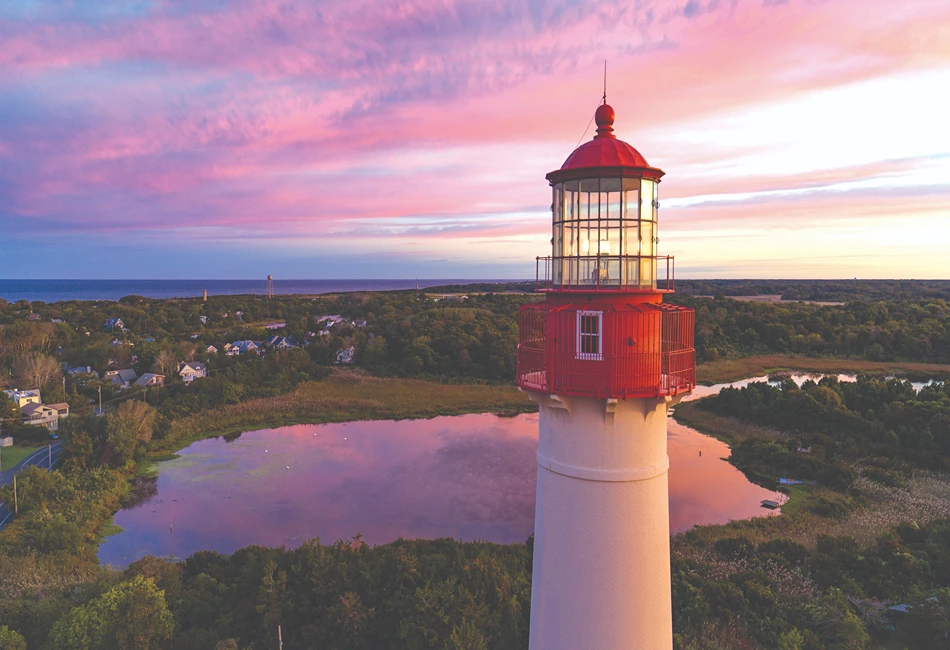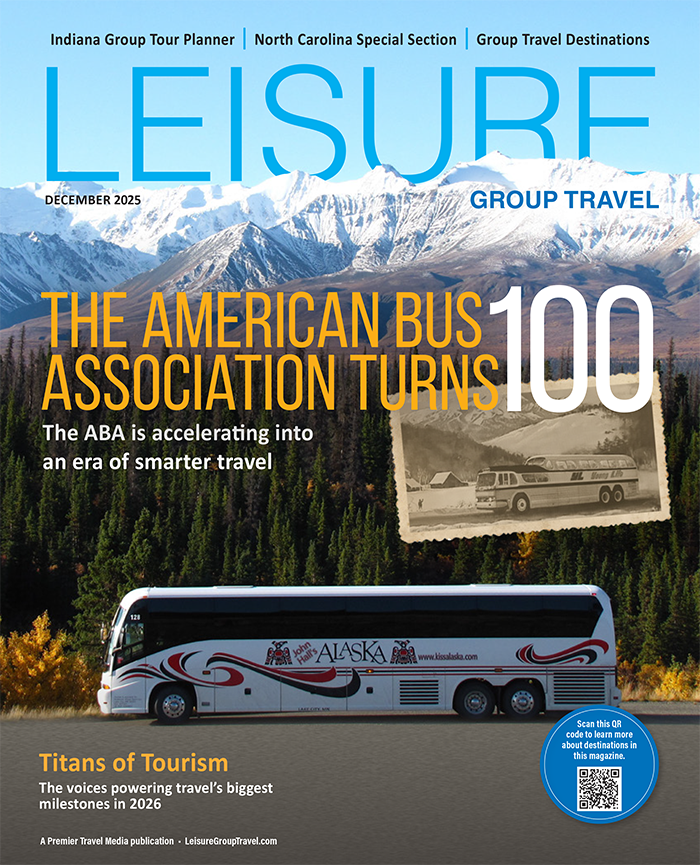Explore the people, places and stories that shaped New Jersey’s historic identity
By Madelyn Bugai
New Jersey has a diverse and layered history, making it an appealing destination for group travel. From Revolutionary War sites such as the Princeton Battlefield State Park and Boxwood Hall, groups can walk in the footsteps of notable figures of American history.
After the Revolution, New Jersey became a hub for immigration, innovation and land and water transportation. The Industrial Revolution brought changes to labor and coastal trade, leading to the rapid expansion of urbanization and economic transformation.
Today, New Jersey resonates with stories from the people and places that have shifted and changed throughout history. The state’s small size and well-developed infrastructure makes it easy for groups to explore multiple historic sites in a single trip. Travel across timelines while exploring the state’s diverse historic attractions.
Read more content exploring America’s rich history through immersive itineraries, historic landmarks, and heritage travel insights from Leisure Group Travel.
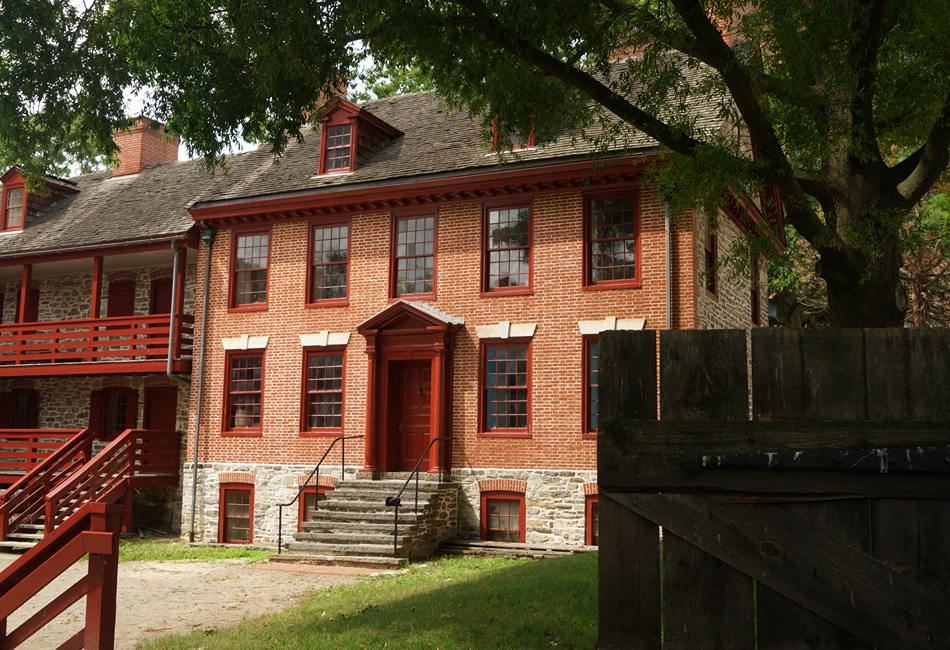
Old Barracks Museum in Trenton.
Explore Early America & the American Revolution
New Jersey played a significant role in the emergence of America as a nation. In the heart of historic downtown Trenton stands the Old Barracks Museum—a museum that preserves the barracks used in the French & Indian War and the American Revolution.
The last remaining structure of its time, the Old Barracks offers a glimpse into military life from 1758–1791 through history programs, special exhibitions and guided tours. Adorned in period dress, tour guides transport groups back in time in an exploration of American history. The museum also displays artifacts and weapons from these 18th-century wars that tell stories from battles such as from the pivotal Battle of Trenton. Currently, the museum is closed for renovation, but is expected to reopen in the near future.
Named after the crucial American Revolution battle that transpired in 1777, the Princeton Battlefield State Park offers another perspective into early American history. Located on 85 acres of rolling fields and tranquil woods, the battlefield’s landscape seems to have no trace left from the fierce battle that gave Washington his first victory against the British Regulars.
As your group perambulates through the state park, let each step transport you back in time to the Battle of Princeton. Walk past the epochal colonnade, the Clarke House Museum and the iconic Mercer Oak scion.
The northern landscape of New Jersey equally chronicles the emergence of the United States—tracing the bureaucratic narratives in place of tales of battles. Boxwood Hall in Elizabeth, New Jersey, is a National Historic Landmark known for its connection to iconic Revolutionary War figures.
Despite the building’s unassuming, Georgian exterior, Boxwood Hall has been walked through by a number of people who played essential roles in the founding of America. Groups can reserve one-hour guided tours of the hall to tread the floors that were visited by George Washington, Alexander Hamilton, Aaron Burr, General Lafeyette and many more.
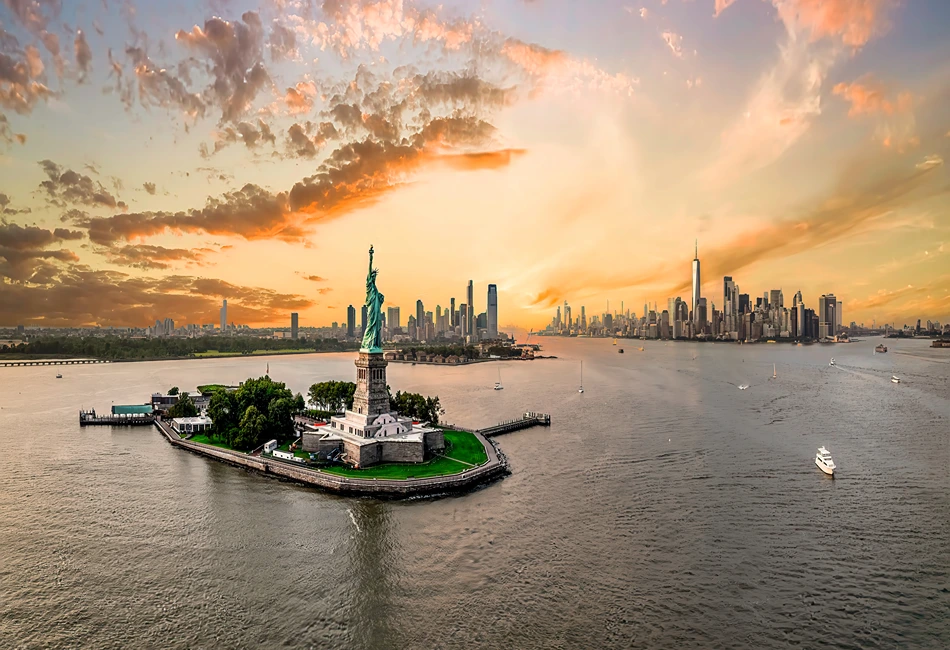
New Jersey is home to incredible views.
New Jersey’s Changing Cultural Communities
Throughout the years, New Jersey’s land has been called home by countless cultural communities. Before colonization and the American Revolution, the Lenni-Lenape people lived throughout the region and neighboring states. When these Indigenous people were forcibly removed, European colonizers claimed the land and brought with them enslaved people of African descent.
The William Trent House—located in Trenton—preserves one account of how colonization and industrialization affected Indigenous, European and African American cultures and communities. This heritage site aims to share the authentic history of the house, property and people who lived on the land.
Tour with a group, and explore all three floors by surveying the parlors, bedrooms, open-hearth kitchen, and the storeroom. Although the house is embellished with antique furniture from William Trent’s time in the 1700s, the Visitor Center highlights the rich cultural history of the property by displaying archaeological artifacts, posters, collectible cards and videos to tell stories from Indigenous people, European immigrants and African American communities.
Ellis Island, opened in 1892, once again changed the cultural landscape of America by welcoming allowing individuals from around the globe to immigrate into the US. Now a memorial for all who immigrated between 1892–1954, Ellis Island serves as a museum where people can learn about the immigration process.
Take the round-trip ferry service with stops at Liberty Island and Ellis Island. At the museum, take your group through a simulated immigration process and note how many individuals do not make it past inspection. Although America pledged to open her doors for the “tired, poor and huddled masses yearning to breathe free,” many were turned away because of their skin color, gender, nationality or presumed disability status.
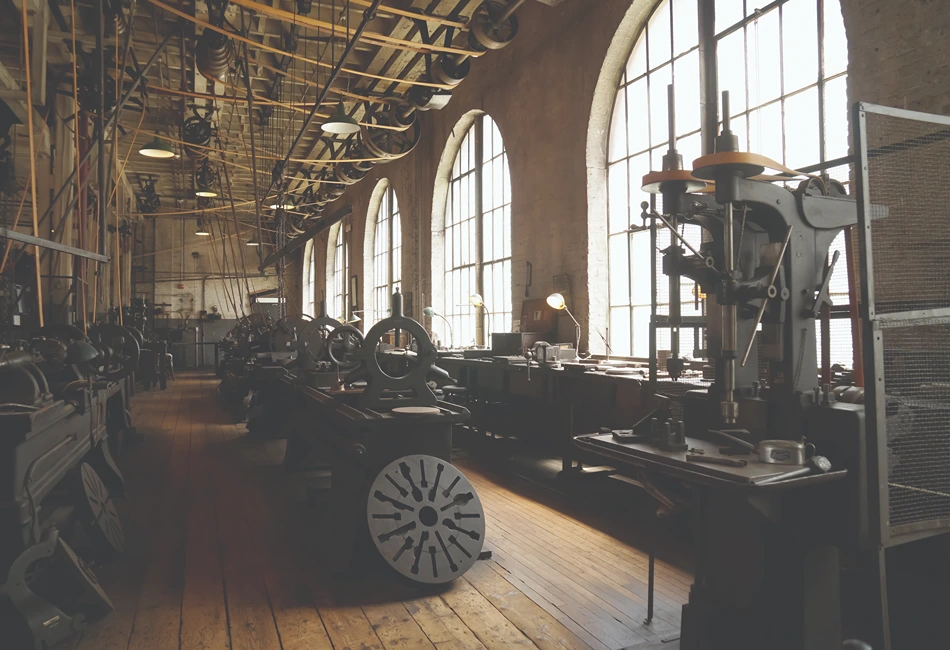
Thomas Edison’s laboratory at Thomas Edison National Historical Park.
Innovation & the Industrial Revolution
Transport groups back into the Industrial Revolution by walking around two New Jersey villages that are dedicated to preserving 19th-century life. Batsto Village in Hammonton and Allaire Village in Monmouth County are both well-preserved, living histories of life during the Industrial Revolution.
Located within Wharton State Forest, Batsto Village consists of 33 historic buildings, including the Batsto Mansion, gristmill, sawmill, general store, workers’ homes and post office. A former bog iron and glassmaking industrial center from 1766 to 1867, the village preserves the agricultural and commercial practices that existed here during the late 19th century.
Allaire Village is one of many historical attractions located within the Allaire State Park. This living-history museum features costumed staff acting out early 19th-century life, blacksmith and carpentry trades, as well as an old bakery that continues to serve sweet treats to guests. The village offers various events such as holiday candlelight tours, haunted hayrides, antique car shows, weekend concerts and seasonal craft fairs, and flea markets.
If your group has some extra time, consider exploring the park’s 3,000 acres of landscape and culture. Hike, bike or horseback on the trails, canoe and fish on the Manasquan River or ride an antique steam train at the New Jersey Museum of Transportation to learn more about one of the most influential inventions during the industrial revolution.
During the late period of the Industrial Revolution, Thomas Edison toiled away in his laboratory and home in West Orange, New Jersey to develop the phonograph, storage battery and motion picture camera. The Thomas Edison National Historic Park invites visitors to step back in time to Edison’s home and laboratory, when machines were run by belts and pulleys and music was played on phonographs.
A self-guided experience, the park allows groups to choose what parts of the laboratory they wish to explore, offering options such as Edison’s library, stockroom, machine shops, music room, as well as over 20,000 square feet of exhibit space.
Lighthouses, Landscapes & Maritime History
Due to its proximity to the coast, New Jersey has a colorful maritime history. From colonial times to the present day, the state has played a vital role in trade and transportation, shipbuilding, naval defense and fishing. An exciting way to engage with and learn about this history is by taking your group to notable lighthouses and museums dedicated to recreating old coastal life.
Visit the Absecon Lighthouse—New Jersey’s tallest lighthouse. Ascend 228 stairs to enjoy panoramic views of the Atlantic city’s skyline and coastline with your group. Built in 1857, the Absecon Lighthouse is one of the country’s oldest, resonating with years of New Jersey’s rich maritime history. Come face-to-face with the original first-order Fresnel Lens—first lit in 1857—or walk through the newly restored Lightkeepers’ dwelling for an immersive experience.
If immersive experiences interest your group, consider visiting Tuckerton Seaport & Baymen’s Museum, a working maritime village that merges the maritime traditions of the past and present to life through people, exhibits and hands-on activities.
Located along the Tuckerton Creek, the museum’s location bridges culture and nature, bringing folk life traditions to life through both land and water programs. Take a stroll on the ¼ mile nature trail or ¾ mile boardwalk, watch decoy carvers, boat builders, basket makers and baymen, or enjoy a tour and tea at the historic Captain’s House.
On the northern tip of Long Island sits the Barnegat Lighthouse and its state park. Regarded as one of the most critical “change of course” points for coastal vessels, the lighthouse aided sailors in navigating through the rough currents, shifting sandbars, and offshore shoals. Accompanied with a coastal heritage trail, Barnegat Light Museum and one of the state’s last maritime forests, the park offers fun for all groups.
Subscribe to Leisure Group Travel Magazine for in-depth stories like New Jersey’s evolving historic landscape, plus expert insights and curated features from our History & Heritage collection delivered straight to you.


